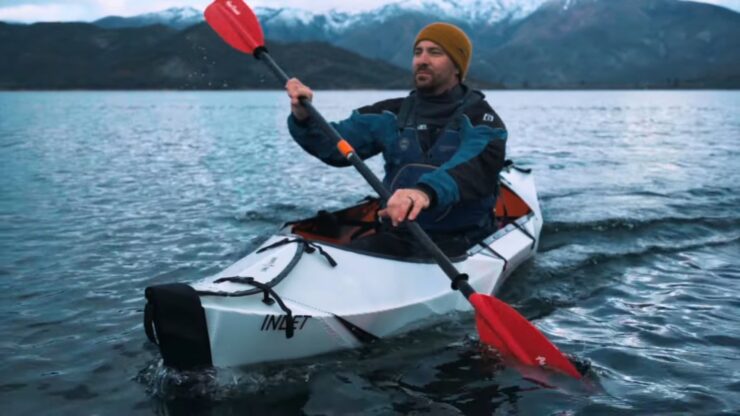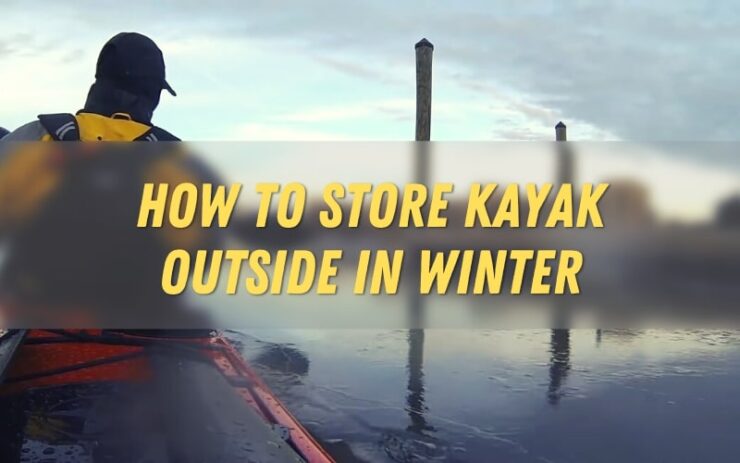Having a hobby that you care about a lot is always fun. We tend to look for interesting things to do when we are finally free and when we do, it fills us with joy and positive energy. However, it is important to remember that there must always be a healthy dose of care and diligence with hobbies, especially when they include the need for specific equipment.
Many physically demanding activities like sports require gear that must be taken care of if you mean for it to last. If you fail to do so, it will become ruined and unusable. The more demanding and specific the sport, the more expensive the gear.
One class of activities is more like this than others as it asks for the enjoyers to use large items and care for them regularly. Those are water-based activities and sports, one of which is kayaking. The use of kayaks has not always been oriented toward recreation, but these days it largely is.
Kayaks are a popular and versatile form of watercraft, providing a fun and exciting way to explore the great outdoors. While they are sturdy and well-built, they still require proper care and maintenance to ensure they last for many seasons of enjoyment. If you want yours to last you for a long time, you have to know how to take good care of it in all situations, as well as during the entire year.
Taking Care of Your Kayak
First and foremost, it is important to rinse your kayak off with fresh water after each use. This will help to remove any dirt, debris, and saltwater that may have accumulated on the kayak during your outing. This step is especially important if you are using your kayak in saltwater, as the salt can corrode the metal parts of your kayak over time if it is not washed off.
Another crucial aspect of kayak care is proper storage. It is important to store your kayak in a dry and sheltered location when it is not in use. If you have a hard-shell kayak, you should store it upside down on its hull to prevent water from pooling in the cockpit. Soft-shell kayaks should be stored in a bag to protect them from the elements.
It is also a good idea to clean and inspect your kayak regularly for any signs of wear or damage. Check the hull for cracks or scratches, and look for any rust or corrosion on the metal parts of your kayak. If you notice any damage, it is important to repair it as soon as possible to prevent it from getting worse.
In addition to regular inspection and cleaning, you should also lubricate the moving parts of your kayak on a regular basis. This will help to prevent the parts from seizing up and will ensure that your kayak functions properly. Be sure to use a lubricant that is specifically designed for use on watercraft, as other types of lubricants may not be suitable.
What About the Cold of Winter?

Winter weather can be harsh on outdoor equipment, including kayaks. The cold temperatures, snow, and ice can damage the kayak’s materials, leading to cracks and other damage. To help protect your kayak from winter weather, it would be best to store it inside. However, if you do not have room to store it inside or you are traveling and need to store it outside, there are some steps you can take to help protect it.
In our previous article, we covered some essential tips and tricks for those interested in trying out the exciting sport of kayaking in the winter, which you should check out before venturing out in the cold weather.
First, make sure the kayak is clean and dry before you store it. Any dirt or moisture that is on the kayak can lead to the growth of mold and mildew, which can damage the kayak’s materials and cause it to deteriorate over time. To clean the kayak, use a mild soap and water solution and a soft sponge or brush to scrub away any dirt or grime. Rinse the kayak thoroughly with clean water and let it dry completely before storing it.
Next, find a location to store the kayak that is out of direct sunlight and away from sources of heat. Exposure to sunlight can cause the kayak’s materials to fade and weaken, while exposure to heat can cause the kayak to become brittle and more susceptible to damage. A good location for storing a kayak outside in the winter is in a shed or garage if you have one, or under a porch or overhang that provides some shelter from the elements.
You can also cover the kayak with a tarp or kayak cover to help protect it from snow and ice. Make sure the cover fits the kayak securely and is made of a durable material that can withstand winter weather. This will help prevent snow and ice from accumulating on the kayak, which can lead to damage. If you are using a tarp, make sure it is securely fastened to the kayak and not in danger of blowing away in the wind.
Finally, make sure the kayak is securely supported and not in danger of falling over. Snow and ice can be heavy, and if the kayak is not properly supported, it can be damaged if the snow or ice accumulates on top of it. Use kayak racks or other support systems to hold the kayak in place and prevent it from falling over.
Conclusion and Takeaways
In summary, if you need to store a kayak outside in the winter, make sure that it is clean and dry, store it in a location that is out of direct sunlight and away from sources of heat, cover it with a tarp or kayak cover, and make sure it is securely supported.
By taking these steps, you can help protect your kayak from winter weather and ensure it stays in good condition. There will be no winter strong enough to ruin your good old vessel and it will surely survive until spring when you can again start taking it out for a daily dose of paddling.
Meet Maria Alexander, the fearless adventurer steering the ship at KayakPaddling.net. Her mission? To convince you that life’s too short for dry land and that the best stories always start with “So there I was in my kayak…”
Related Posts:
- 15 Best Baitcasting Reel Under $100 2024 - Improve…
- Heavy Duty Fishing: 11 Best Rods And Reels For Big Fish 2024
- 16 Best Kayak For Beginners 2024 - Kayaking Adventure Gear
- 17 Best Trolling Reels 2024 - Enjoy your Fishing Adventure
- 12 Best Beach Wagons & Carts 2024 - For All-Terrain
- 20 Best Inshore Spinning Reels 2024 - Capturing All…












